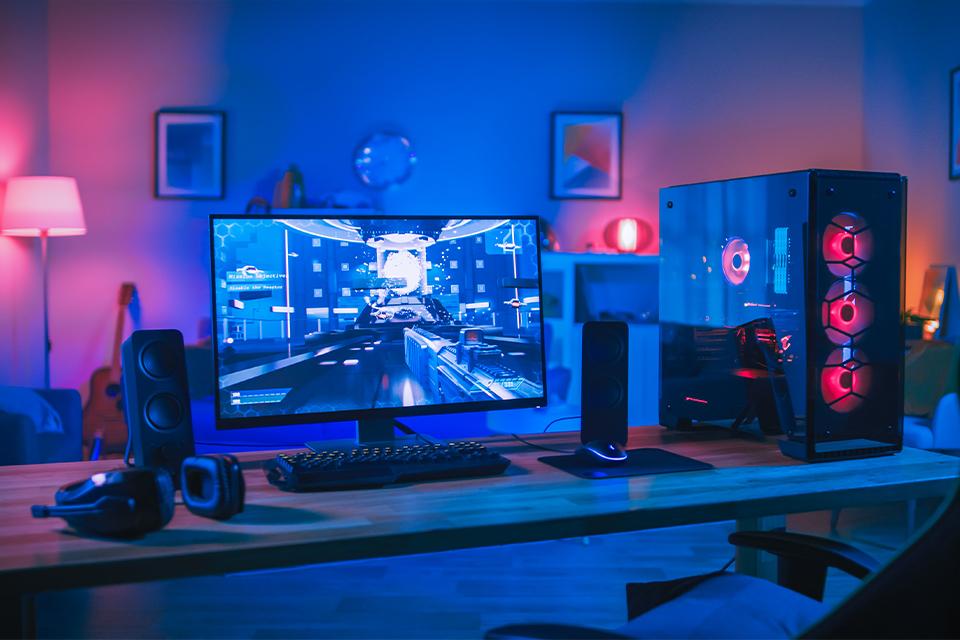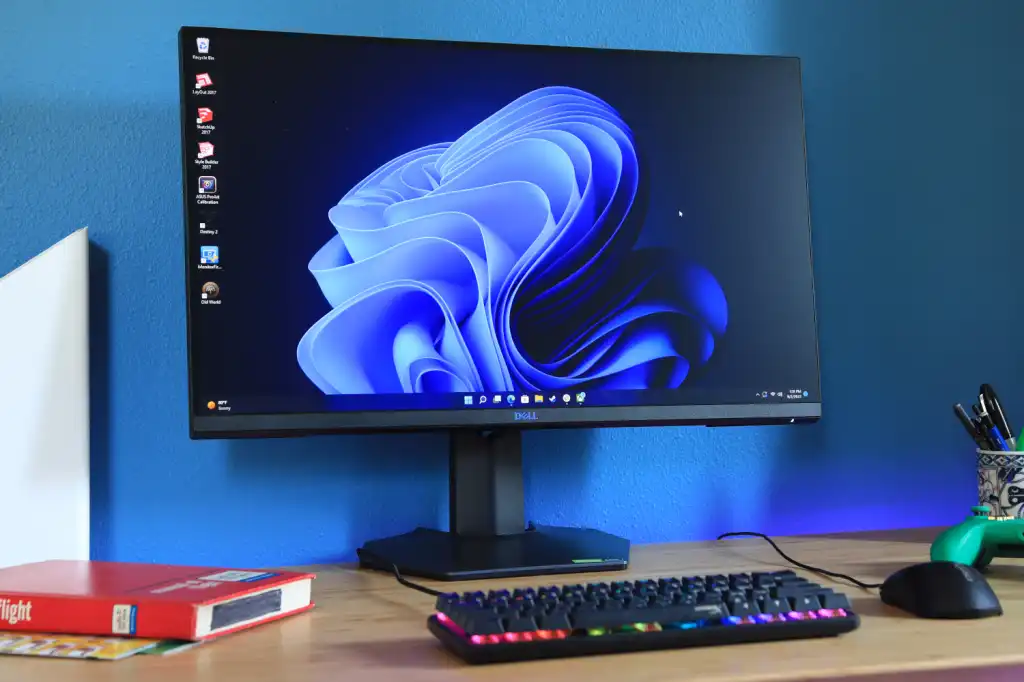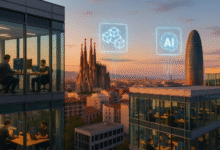
10 Tips for Interpreting the Anatomy of Computers In 2023? As we move further into the digital age, understanding the anatomy of computers has become increasingly important. Whether you’re a professional in the tech industry or just a curious user, having a solid grasp of how computers work can help you troubleshoot problems, make informed purchasing decisions, and communicate more effectively with tech support.
1. Understand the basic components of a computer
Understanding the basic components of a computer is essential for anyone looking to interpret the anatomy of computers in 2023. At its core, a computer consists of several interconnected hardware components that work together to process and store data, as well as to communicate with the outside world. These components include the central processing unit (CPU), memory (RAM), storage (hard drive or solid-state drive), and input/output devices (such as a keyboard, mouse, and monitor).
The CPU, also known as the processor, is the “brain” of the computer. It is responsible for executing instructions and performing calculations, making it one of the most important components of a computer. The speed and power of the CPU can have a significant impact on the overall performance of the computer.
Memory, or RAM, is another critical component of a computer. It is used to temporarily store data and instructions that the CPU needs to access quickly. The amount of RAM a computer has can affect its performance, with more RAM generally resulting in faster speeds and better multitasking capabilities.
Storage is where a computer stores data and programs for long-term use. Traditional hard drives use spinning disks to store data, while solid-state drives (SSDs) use flash memory. SSDs are faster and more reliable than hard drives, but they are also more expensive.
Input/output devices are the means by which users interact with the computer. The keyboard and mouse are used to input commands, while the monitor displays output from the computer. Other input/output devices can include printers, speakers, and webcams.
Overall, understanding the basic components of a computer is essential for interpreting its anatomy. By understanding how these components work together, users can make informed decisions about upgrades, troubleshoot issues, and optimize performance.
2. Keep up with the latest trends in computer hardware

Keeping up with the latest trends in computer hardware is crucial for anyone looking to interpret the anatomy of computers in 2023. As technology advances, hardware components are becoming smaller, more powerful, and more energy-efficient. This can lead to faster performance, longer battery life, and new features and capabilities.
One major trend in computer hardware is the use of solid-state drives (SSDs) instead of traditional hard drives. SSDs are faster, more reliable, and more energy-efficient than hard drives, making them a popular choice for laptops and other portable devices. Another trend is the use of hybrid storage solutions, which combine an SSD with a traditional hard drive to offer the best of both worlds.
Another trend in computer hardware is the use of smaller, more efficient processors. Manufacturers such as Intel and AMD are constantly releasing new processors that offer improved performance and power efficiency. These processors can provide faster speeds, better multitasking capabilities, and longer battery life.
Graphics processing units (GPUs) are another important hardware component that are constantly evolving. These specialized processors are used to render high-quality graphics in video games, 3D modeling software, and other graphics-intensive applications. Newer GPUs are faster, more energy-efficient, and offer new features such as ray tracing and artificial intelligence acceleration.
Other trends in computer hardware include the use of Wi-Fi 6 for faster wireless networking, the adoption of USB-C for charging and data transfer, and the use of Thunderbolt 4 for high-speed data transfer and video output. These trends can provide users with faster speeds, better connectivity, and more convenience.
Overall, keeping up with the latest trends in computer hardware is important for anyone looking to interpret the anatomy of computers in 2023. By understanding the latest advances in hardware, users can make informed decisions about upgrades, choose the best components for their needs, and take advantage of new features and capabilities.
3. Familiarize yourself with computer software
Familiarizing yourself with computer software is another crucial aspect of interpreting the anatomy of computers in 2023. Software is the set of instructions that tells a computer what to do and how to do it, including operating systems, productivity software, and specialized applications.
Operating systems are the foundation of any computer system, and they are responsible for managing hardware resources, running software, and providing a user interface. Popular operating systems include Windows, MacOS, and Linux.
Productivity software is used to create documents, spreadsheets, presentations, and other types of content. Microsoft Office is a popular suite of productivity software that includes Word, Excel, PowerPoint, and other applications. Other productivity software options include Google Docs, LibreOffice, and Apple iWork.
Specialized applications are software programs designed for specific purposes, such as video editing, photo editing, and graphic design. Adobe Creative Suite is a popular suite of applications used for creative work, while Autodesk software is commonly used for engineering and architecture.
In addition to these traditional software categories, cloud-based software and web applications are becoming increasingly popular. Cloud-based software runs on remote servers and can be accessed from any device with an internet connection. Examples of cloud-based software include Google Drive, Microsoft OneDrive, and Dropbox. Web applications are software programs that run in a web browser and can be used on any device with internet access. Examples of web applications include Gmail, Facebook, and Twitter.
Familiarizing yourself with computer software is essential for interpreting the anatomy of computers in 2023. By understanding the different types of software and how they work together, users can optimize their productivity, troubleshoot issues, and make informed decisions about software upgrades and purchases.
Read More: 10 Pro Tips for Optimizing Your PTZ webcam USB Experience
4. Learn the basics of computer networking

Learning the basics of computer networking is another important aspect of interpreting the anatomy of computers in 2023. A computer network is a group of interconnected devices that can communicate with each other and share resources, such as files, printers, and internet access.
The basic components of a computer network include:
- Network interface cards (NICs): These are hardware components that connect devices to the network. NICs are typically built into the motherboard of a computer or installed as an expansion card.
- Switches and routers: These are hardware components that connect devices on a network and manage the flow of data between them. Switches are used to connect devices within a network, while routers are used to connect different networks together.
- Cabling: Ethernet cables are used to connect devices to switches and routers. Different types of cabling have different speeds and distances, with Cat 5e and Cat 6 being the most common.
- Network protocols: These are the rules and standards that govern how devices communicate on a network. The most common network protocol is TCP/IP, which is used for internet communication.
Networking can be categorized into two types:
Local Area Network (LAN): A LAN is a network that covers a small geographic area, such as a home or office. Devices on a LAN can communicate with each other and share resources.
Wide Area Network (WAN): A WAN is a network that covers a large geographic area, such as a city or country. WANs are typically used to connect LANs together or to provide internet access.
Network security is another important aspect of computer networking. Firewalls, antivirus software, and virtual private networks (VPNs) are used to protect networks from unauthorized access, malware, and other threats.
Overall, understanding the basics of computer networking is important for interpreting the anatomy of computers in 2023. By understanding how devices connect and communicate on a network, users can troubleshoot issues, optimize performance, and make informed decisions about network upgrades and security.
5. Be aware of cybersecurity threats

Being aware of cybersecurity threats is essential for interpreting the anatomy of computers in 2023. Cybersecurity threats are any malicious attempt to damage, disrupt, or gain unauthorized access to a computer system, network, or data.
Some common cybersecurity threats include:
- Malware: Malware is malicious software that is designed to damage, disrupt, or gain unauthorized access to a computer system or network. Examples of malware include viruses, worms, Trojans, and ransomware.
- Phishing: Phishing is a type of social engineering attack where a cybercriminal attempts to trick a user into revealing sensitive information, such as login credentials or credit card numbers, by posing as a trustworthy entity.
- DDoS attacks: Distributed Denial of Service (DDoS) attacks are designed to overwhelm a network or website with traffic, making it unavailable to users.
- Man-in-the-middle attacks: Man-in-the-middle (MitM) attacks occur when a cybercriminal intercepts and alters communications between two parties, allowing them to steal sensitive information or inject malware into a network.
- Insider threats: Insider threats occur when an employee or other trusted individual with access to sensitive information intentionally or accidentally leaks or misuses that information.
To protect against cybersecurity threats, users can take a variety of measures, including:
- Using strong and unique passwords and enabling two-factor authentication.
- Keeping software and operating systems up to date with the latest security patches.
- Using antivirus and anti-malware software to protect against known threats.
- Educating employees and other users about cybersecurity best practices and threats.
- Implementing network security measures, such as firewalls and VPNs.
In summary, being aware of cybersecurity threats is critical for interpreting the anatomy of computers in 2023. By understanding the types of threats that exist and taking proactive measures to protect against them, users can safeguard their computer systems, networks, and data.
6. Understand the role of cloud computing
Cloud computing has become an increasingly popular way to store and access data and software applications. Instead of storing data and running applications on a local computer, cloud computing allows users to access these resources from a remote server. Understanding the basics of cloud computing can help you make informed decisions about which services to use and how to optimize performance.
7. Keep your computer clean and well-maintained
Proper maintenance is key to keeping your computer running smoothly and extending its lifespan. This includes keeping your hardware and software up-to-date, regularly cleaning your computer’s components (such as dusting out the inside of your tower), and running regular virus and malware scans.
8. Know how to troubleshoot common computer issues
No matter how well-maintained your computer is, there will inevitably be times when things go wrong. Knowing how to troubleshoot common issues such as slow performance, software crashes, and connectivity problems can save you time and money by avoiding unnecessary trips to a repair shop.
9. Take advantage of online resources and support communities
The internet is a treasure trove of resources for learning about and troubleshooting computer issues. From online forums to YouTube tutorials, there are countless sources of information and support available. Taking advantage of these resources can help you stay up-to-date on the latest technology trends and make informed decisions about upgrades and repairs.
10. Consider professional assistance for complex issues
Conclusion
interpreting the anatomy of computers in 2023 requires a broad understanding of both hardware and software components, as well as the latest trends in computer technology. Basic components such as the CPU, RAM, and storage are crucial for a computer’s performance, while knowledge of networking, cybersecurity threats, and software applications can optimize its usage. Keeping up with the latest trends, such as the rise of quantum computing and 5G networks, is also important for staying ahead of the curve in the rapidly evolving world of computer technology. By continuously learning and staying informed, users can make informed decisions about their computer systems, optimize performance, and protect against cybersecurity threats.












2 Comments